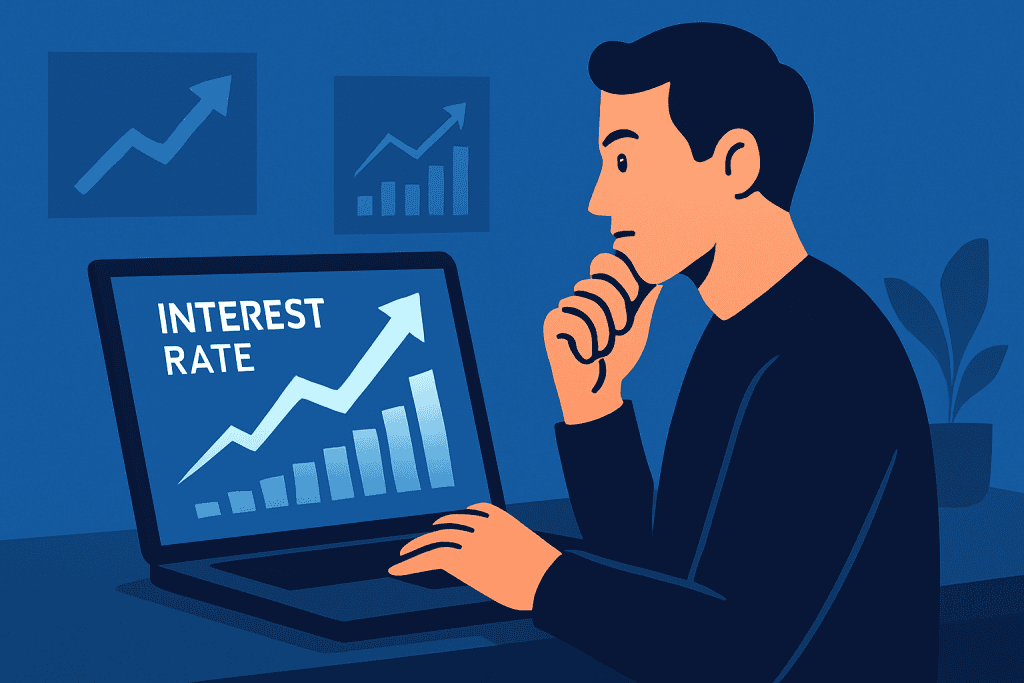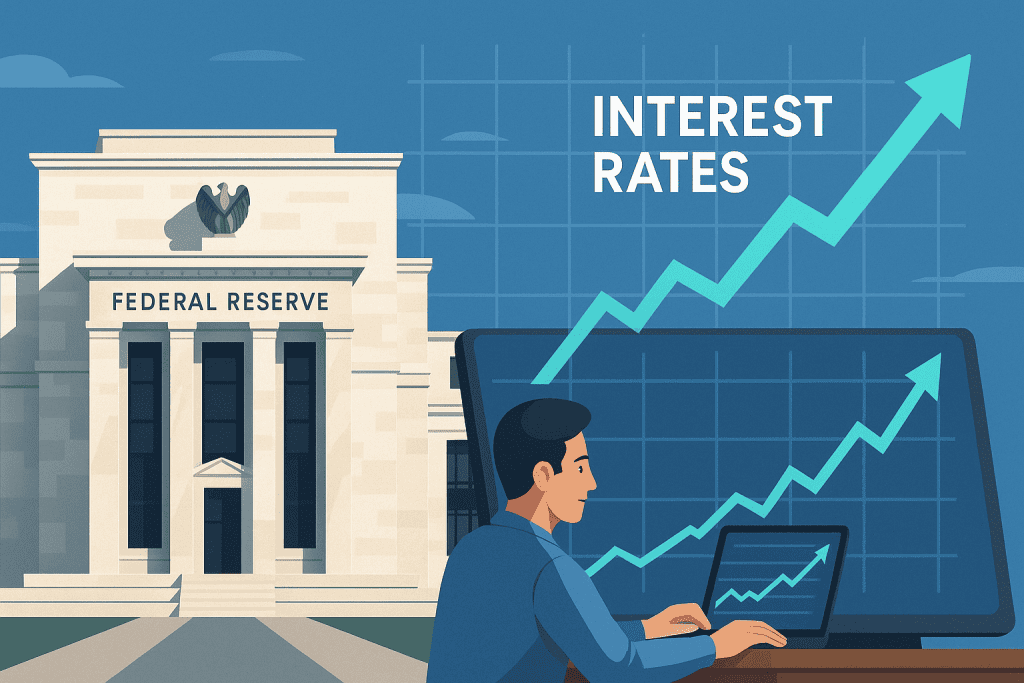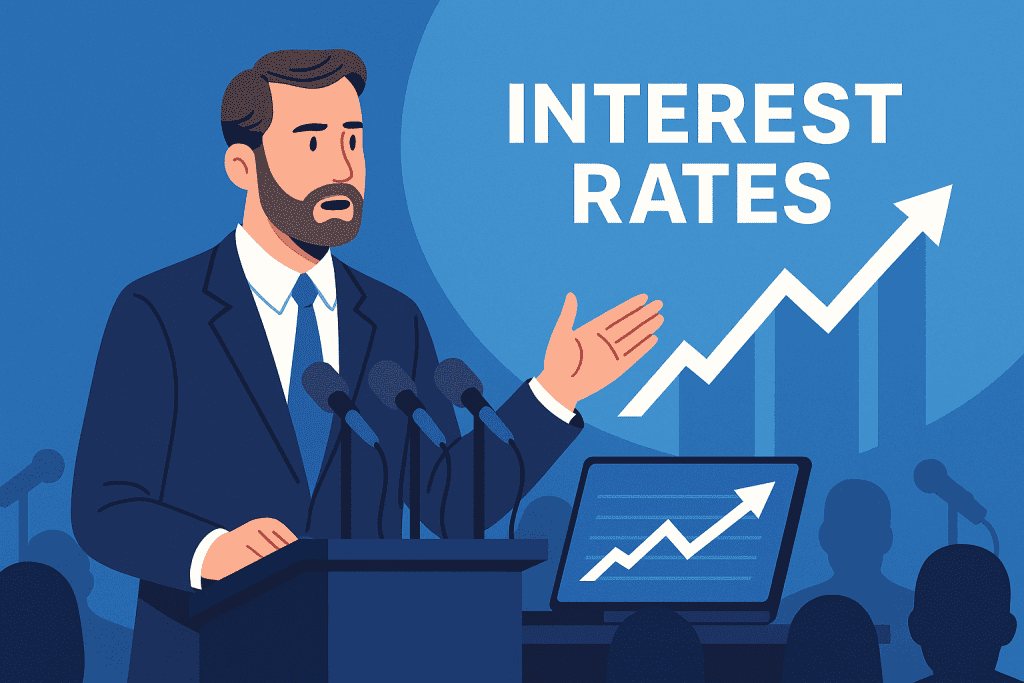
Interest rates shape the economy in ways that affect everyone—from homebuyers and investors to small business owners and everyday consumers. A low-interest environment can boost spending and encourage borrowing, while high rates can slow economic growth and make borrowing expensive. But with all the economic uncertainty, the big question on everyone’s mind is: will interest rates go down anytime soon?
If you’re planning to buy a home, refinance your mortgage, or fine-tune your investment plan, understanding interest rate trends is crucial. Predicting interest rates isn’t an exact science, but by analyzing key indicators, expert insights, and past trends, we can get a clearer picture of where things might be headed.
Let’s dive in and unpack what you need to know about where interest rates might be headed.
Overview
Interest rates are like the heartbeat of the economy. They control the cost of borrowing and influence everything from mortgage rates and car loans to stock prices and business growth. But what causes them to rise and fall?
Key Factors That Influence Interest Rates
- Inflation: When inflation rises, the Federal Reserve raises rates to slow down spending. Conversely, if inflation falls, rates may decrease.
- Federal Reserve Policies: The Fed adjusts interest rates based on economic stability, either raising them to fight inflation or lowering them to encourage borrowing.
- Supply and Demand for Credit: More borrowing drives up rates, while lower demand can lead to reductions.
- Employment Trends: A strong labor market can lead to higher rates, while rising unemployment may push the Fed to lower rates.
- Global Economic Conditions: Events like recessions, wars, or pandemics can impact interest rates by affecting overall financial stability.
Right now, we’re seeing some of the highest interest rates in decades. The Federal Reserve aggressively raised rates throughout 2022 and 2023 to combat inflation, leading to increased borrowing costs across the board.
Pros and Cons of Changing Interest Rates
Interest rate changes affect different groups in different ways. Let’s break down the advantages and disadvantages of both high and low rates.
| Pros | Cons |
|---|---|
| Lower mortgage and auto loan payments | More expensive borrowing for consumers and businesses |
| Easier access to credit and financing | Home sales may slow due to affordability issues |
| Economic growth and increased job creation | Rising credit card and loan interest costs |
| Stronger stock market performance | Businesses may reduce hiring and expansion |
| Real estate investments become more attractive | Housing market may see reduced demand |
So while a drop in interest rates can be good for borrowers and investors, there are also risks associated with overly aggressive rate cuts.
In-Depth Analysis of Interest Rates Trends

To determine whether it will go down, we need to examine the current economic landscape and key financial indicators.
The Federal Reserve’s Role in Interest Rate Decisions
The Federal Reserve is the primary driver of interest rate changes in the U.S. economy. Since 2022, the Fed has been raising rates to slow inflation, bringing borrowing costs to their highest levels since the early 2000s.
- If inflation slows: The Fed may begin to cut rates in late 2024 or early 2025.
- If inflation remains high: it will likely stay elevated to prevent excessive spending.
Inflation and Its Impact on interest Rates
Inflation remains a critical factor in determining interest rate movements. As long as inflation stays above the Fed’s 2% target, rate cuts are unlikely.
However, recent reports suggest that inflation is starting to ease. If this trend continues, we could see that it decline in the coming months.
Housing Market and Mortgage Rates
Higher interest rates have significantly impacted the housing market, making mortgages more expensive and reducing home affordability.
- Current average mortgage rates: ~7%
- Expected trend: If the Fed cuts rates, mortgage rates could drop to 5-6% by late 2024 or early 2025.
For prospective homebuyers, a rate cut could mean thousands of dollars in savings over the life of a loan.
Stock Market and Investment Strategies

It plays a huge role in shaping trading strategies. When rates are high, borrowing becomes expensive, leading to lower corporate profits and declining stock prices.
However, if the Fed signals rate cuts, we could see a strong rally in best stocks to buy, especially in tech and real estate sectors.
Business and Employment Outlook
Businesses often cut back on hiring and expansion during periods of high-interest rates. If borrowing costs decrease, we could see an increase in job creation and business growth.
Interest Rate Comparison
| Year | Average Mortgage Rate | Federal Reserve Rate Changes |
|---|---|---|
| 2020 | ~3% | Rates slashed due to pandemic |
| 2022 | ~5.5% | Aggressive rate hikes to combat inflation |
| 2023 | ~7% | Continued increases to stabilize the economy |
| 2024 (Projected) | 5-6% | Potential rate cuts if inflation slows |
- Rates may fall if inflation continues to decline.
- Borrowing costs will remain high if economic growth stays strong.
- Investors should prepare for market volatility as the Fed adjusts policy.
Conclusion
So, will interest rates go down? While there is some optimism for rate cuts in late 2024, uncertainty remains high. The Federal Reserve continues to monitor inflation, employment trends, and economic stability before making any major policy shifts.
If inflation slows significantly and economic conditions soften, we could see a gradual decline in interest rates. However, if inflation remains persistent or the job market stays strong, the Fed may keep rates elevated well into 2025. This means borrowers should prepare for potentially prolonged high borrowing costs, while investors must adjust their investment plan accordingly.
The best approach is to stay informed, track Federal Reserve decisions, and be ready to make financial adjustments as needed. Whether you’re looking to buy a home, refinance a loan, or invest in the stock market, understanding interest rate trends will help you make more strategic and well-timed financial decisions.
FAQ
Will interest rates go down in 2025?
It depends on inflation and economic trends. If inflation slows, the Federal Reserve may cut rates, making borrowing cheaper.
How do interest rates impact my investment plan?
Higher rates can lead to a market crash in overvalued stocks, while lower rates typically boost stock and real estate investments.
What are the best stocks to buy if interest rates fall?
Tech stocks, growth companies, and real estate firms often perform well when rates drop. However, financial institutions may struggle as profit margins shrink.
Resources
- Bank at First. Why it Rising?
- CIRO. How It Impact Finances
- Investopedia. Sectors That Benefit from Rising Interest Rates
- YouTube. Will Interest Rates Ever Come Down?
- Twitter. QE Infinity on Interest Rate Predictions
